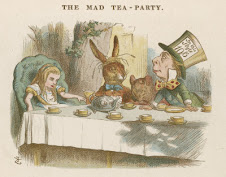Given that the proposition was opposed by all six ballot qualified parties in the state –an unusual coalition of Democrats, Republicans, Greens, Libertarians, Peace and Freedom and the American Independent Party– there are sure to be numerous legal challenges to the measure. Indeed, the CA Secretary of State stated that an "army of lawyers" would be looking into the constitutionality of the new system if it was passed by voters.
Unless any such challenge is successful, beginning next year California will effectively have a run-off style election system, in which all candidates for partisan public office (presidential contests excluded) will be listed on the same primary election ballot, and the "top-two" vote-getters across the board will proceed to the general election. Richard Winger of Ballot Access News, a staunch opponent of the measure, writes:
California now has the most restrictive general election ballot access in the nation. Even Georgia always has three candidates on the November ballot for statewide office. Even Oklahoma typically has three candidates on the November ballot for Congress, as does North Carolina.However, if we understand "top-two" as a form of run-off system, the primary ballot access question will be what the rules are governing access to the primary ballot. Nonetheless, the logic behind the structure of "top two" clearly rests almost entirely on the form of binary duopolist thinking with which we are already quite familiar; but, curiously, advocates of the Democratic and Republican Parties –and indeed of all parties– were among the staunchest opponents of the measure. Perhaps this, more than anything else, tipped the scales in favor of the proposition. One can easily imagine voters reasoning that if the parties are so strongly opposed to it, it must be good. That is the spirit of (anti-)party. Maybe they are right. What's the worst that could happen? California would end up with a dysfunctional government?
Update: The New York Times Room for Debate blog is currently carrying on a discussion of Proposition 14 by individuals both for and against the measure, including a third party advocate and an observer from Washington State, where a form of top-two was instituted a few years ago.







No comments:
Post a Comment